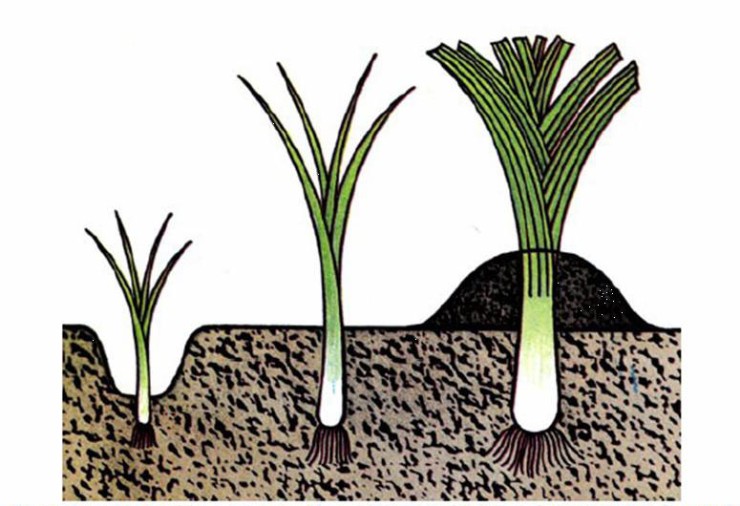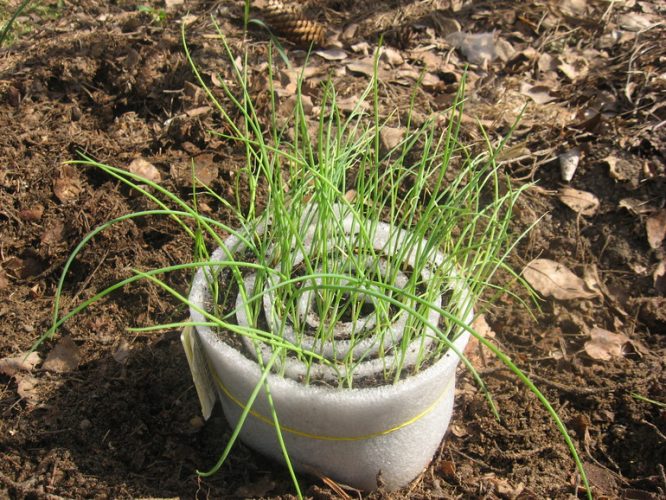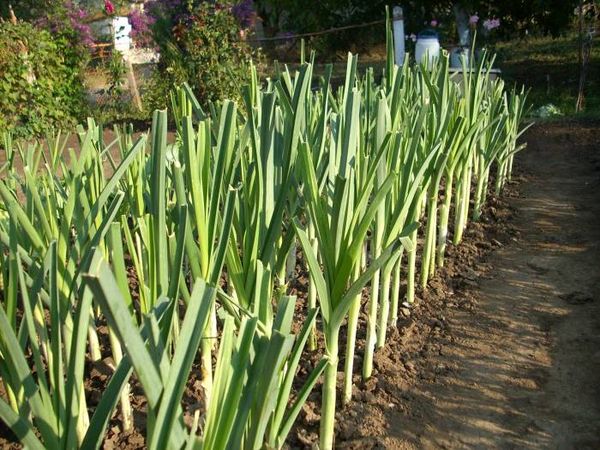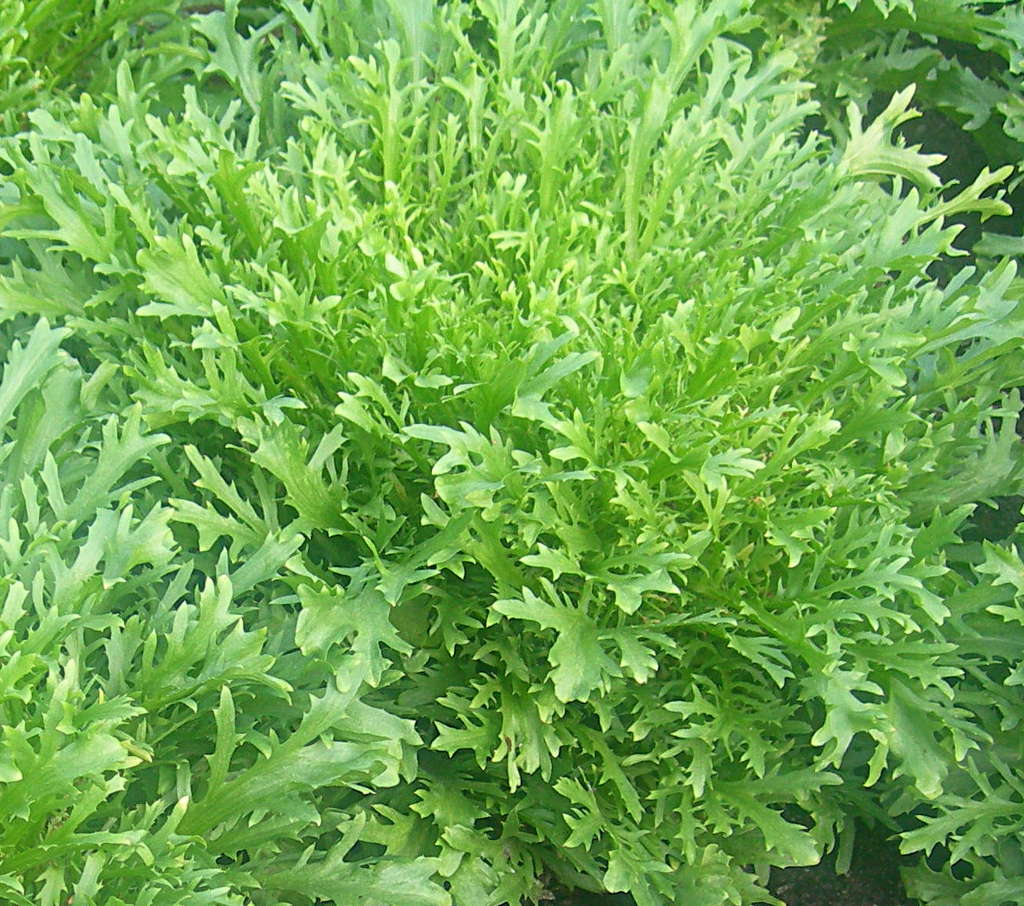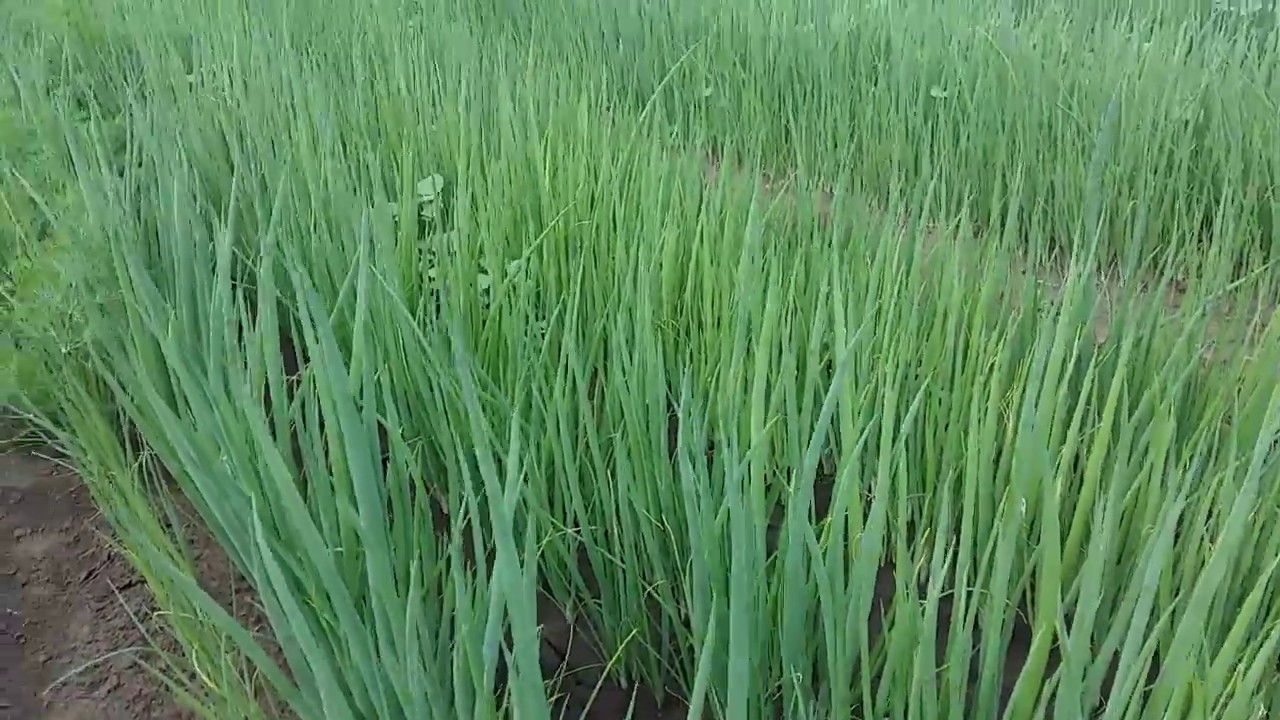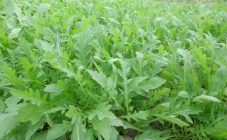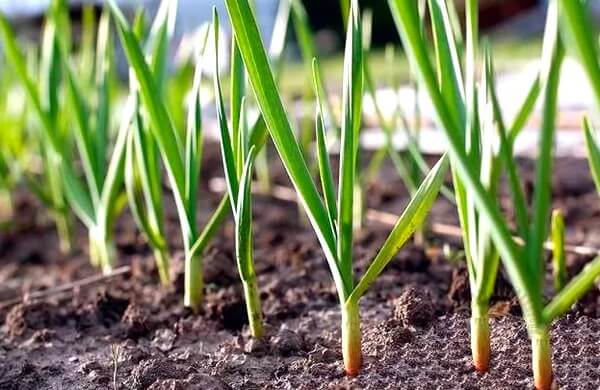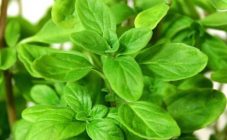Content:
Fresh leafy greens are essential for a nutritious, healthy diet. Among the many vegetable crops familiar from childhood, the original name is lettuce onion. In fact, this vegetable has nothing to do with the Onion family, since there is a significant difference between Lettuce and other onions. This representative of the Astrov family, originally from the Mediterranean, is a sowing salad. The name may indicate the onion bitter taste of this vegetable. For its many useful properties, lettuce (lettuce) onions are very fond of summer residents and gardeners.
Agricultural technology for a high yield
Cultivation of Lettuce does not cause any particular difficulties, since the plant is unpretentious and, with proper care, gives a quick and bountiful harvest.
Lettuce is best grown in sunny areas (light partial shade is possible). The soil is preferable light (sandy loam, loam), non-acidic (acidity level should be in the range from 6.7 to 7.4) and moderately fertile. If the site has over-acidified soil, this can be corrected by the introduction of chalk, hydrated powdered lime or dolomite flour (0.2 kg per 1 square meter of garden). Some farmers are advised to supplement these funds with complex nitrogen-phosphorus fertilizer at the rate of 1 tbsp. spoon for 1 square. m.
To increase the fertility of the garden, you can use plant humus, carbamide (urea), rotted mullein (manure) (about 4-5 kg per square meter of plot for lettuce) or a mixture of chemicals:
- superphosphate (30 grams / m2);
- potassium salt (20 grams / sq. m);
- ammonium nitrate (up to 30 grams / sq. m).
The plot should be prepared for planting in advance: it must be leveled so that puddles do not form and subsequently do not overmoisten the soil.
Lettuce onions can be grown in open areas and in greenhouses, a pot with this green crop can even be placed on a windowsill. At the same time, planting on open soil is possible already in the last decade of April, and if you plan to get a very early harvest of greens, then you can sow seeds in the pre-winter and cover them with polyethylene in the cold period.
Lettuce gets along well with low temperatures (up to minus 2 degrees), and starts growing at plus five.
Reproduction of culture
Lettuce is sown both as seeds in open ground and by germinating seedlings in special boxes on a humus-turf mixture (the ratio of components is 1 to 1). Greens in April, preceding carrots and radishes, are used for early consumption, and those planted in the second half of July are late harvests. The seeds are placed at the maximum allowable depth of one and a half centimeters.
Seedlings are also laid in the first decade of April, in this case, the seeds are immersed by one centimeter, the soil layer is compacted from above and the seedlings are waited for. After the seeds that have hatched have grown for about a month, you can transplant the seedlings directly into the beds - by this time several real leaves should have appeared.
In order to get a juicy green bulb of lettuce, you can sow new plants every 20 days, while after June the interval can be reduced to 15 and 10 days. In hot and dry weather, the seeds should be buried deeper than usual to form tight and strong onion heads. If the planting turned out to be heap, then at the exit of the third full-fledged leaf, the young growth of lettuce should be trimmed (the optimal seedling density is no more than 8 plants per square meter), since densely and crowded growing greens will not give juicy and abundant foliage. Thinning also enables the strongest plants to grow and thrive, resulting in richer yields.
In the presence of heavy soils on the site, onion-Letuka propagation is carried out on bulk ridges. If there is not much space in the garden, then the lacy leaves of this green vegetable may look like a fence for planting cabbage or tomatoes.
Sowing with seeds
This is the most popular method of growing Sowing lettuce in central Russia and further south. It is recommended to pre-soak the seed in a weak (slightly pinkish) solution of potassium permanganate, the holding time is no more than 3 hours. This is necessary to get rid of spores of fungi and other pests. Further, experienced vegetable growers advise following this algorithm:
- moistening future beds;
- cutting grooves, the distance between adjacent ones should be no more than 10 centimeters;
- place the treated seeds in rut, sprinkle with soil and tamp a little;
- in case of unstable weather, they are covered with polyethylene to create the effect of a greenhouse.
The first plants should be born in less than a week. At about the same time, it is advisable to carry out the first thinning of the beds in such a way that the shoots are at least 1 and no more than 2 centimeters apart from each other. The second time, young shoots are thinned out after the release of several leaves.
To facilitate sowing, the seeds can be mixed with fine, clean sand.
Planting seedlings
Lettuce is bred through seedlings, mainly for the winter or for a constant supply of vitamin greens throughout the warm season at intervals of a couple of weeks.
In the open air, seedlings should grow with 20-25 cm spacing between rows (unlike early-ripening salads, in late-season salads, the distance between neighboring plants should be 25 cm) and 4-cm gaps between the seedlings themselves. The ideal planting density of seedlings should be achieved by the time the rosette is formed (about five leaves).
In order to get a healthy leafy vegetable to the table as early as possible, seedlings are sown in the third decade of January.
The neck of the rhizome of young plants should be flush with the soil level, this should be monitored during all planting work. The seedling step is determined by the ripening rate of lettuce:
- early ripening plants require an area of 0.1 by 0.1 meters for good nutrition;
- mid-early - 0.15 by 0.15 meters;
- late ripening - 0.25 by 0.25 meters.
Seedlings of late Letuca onion species, which have the distinctive property of not forming arrows, are planted in the middle of summer. You can add it to tomato or cucumber seedlings.
Features of crop care
Caring for green Lettuca bushes is quite simple, no special agronomic manipulations are required. First of all, this is moisture, which should be abundant enough, since with insufficient watering, the plant begins to shoot early, and green leaves acquire an unpleasant bitterness. However, it should be remembered that waterlogging can lead to damage to the root system by putrefactive bacteria and fungi. The recommended watering frequency is once or twice a week for garden beds and once every couple of days for potting. It is advisable to carry out the manipulation early in the morning, so as not to create excessive air humidity near the plants, try not to touch the leaves, because this can provoke fungal diseases such as downy mildew or various rot.
With sufficient composting before planting seeds or seedlings, additional dressing in the open field is not required. However, on poor soils, it is allowed to introduce herbal infusions or mullein twice during the growing season of the salad.
If lettuce is grown on a windowsill, you can apply any fertilizer for indoor flowers every one and a half to two weeks. However, you should not overdo it with nitrogen-containing dressings, since lettuce leaves can heat up nitrates in themselves. This property can be used in order to obtain leafy vegetables fortified with iodine: top dressing with potassium iodide.
It is better to protect the crop from pests by "folk" methods: spraying with solutions of husks from onions or tomato stalks, periodic collection and destruction of infected foliage.
How to harvest
Lettuce quickly provides an opportunity to taste juicy green leaves - within a month and a half after planting, you can harvest, by which time the onion heads should reach 6-7 cm in diameter. It is advisable to do this early in the morning, when the dew has dried up, and the maximum content of nutrients is observed in the vegetable, the heads of lettuce at this time will look fresh and elastic. In too much heat or immediately after rain, it is better to refuse from harvesting onions-Lettuka so as not to lose the entire crop from rot.
The harvested vitamin crop can be stored in the refrigerator for about a month, without it - for a couple of days, and plants torn out by the roots and dug in an earthen basement can stay fresh for quite a long time, until mid-winter. When eaten, lettuce leaves must be soaked in water to flush out the accumulated nitrate compounds.
Onion Lettuce (aka lettuce) is a frequent "guest" in garden beds, it contains a lot of vitamins and minerals, it can be used both fresh and harvested for the winter. There are two main methods of propagation of Lettuce: by seeds and seedlings, the difference is in the timing of harvest. In care, this leafy vegetable is completely unpretentious, which allows it to be grown almost everywhere.

